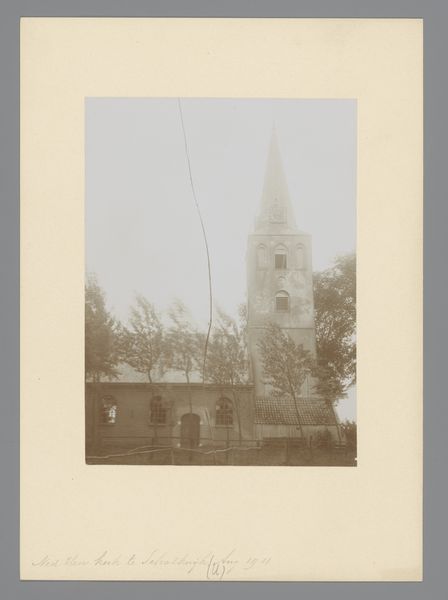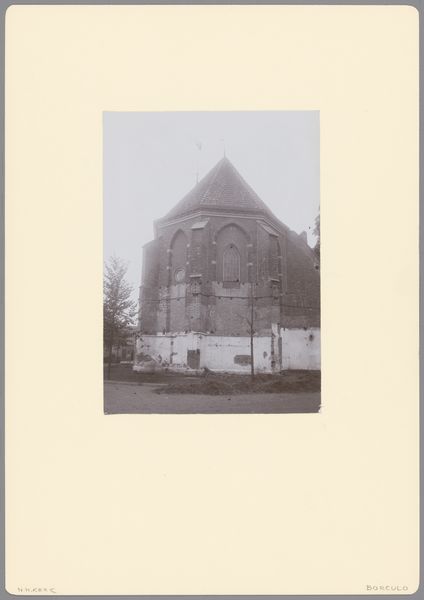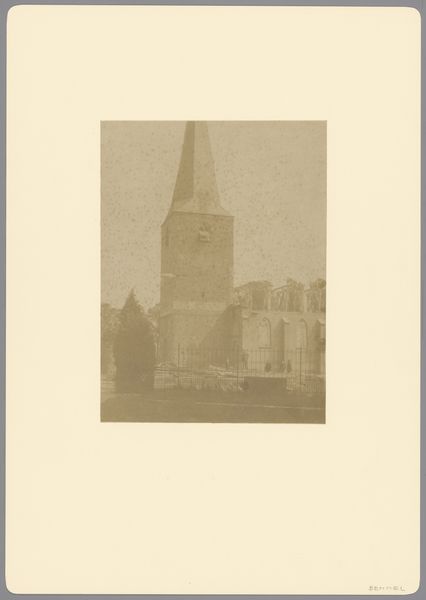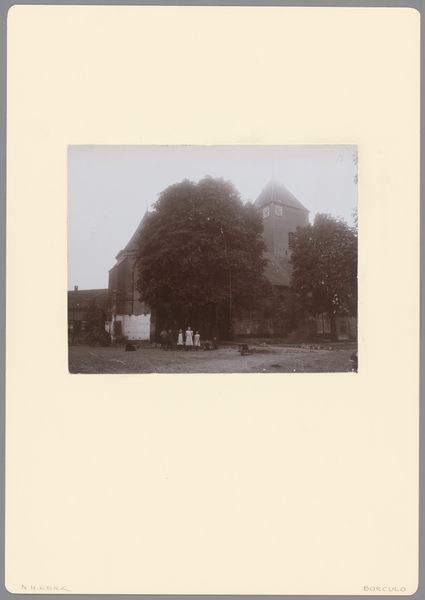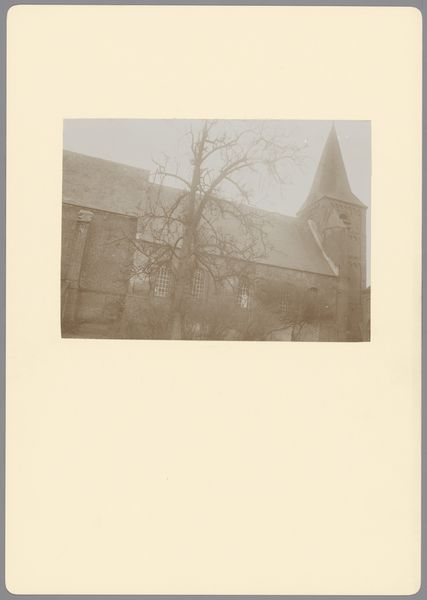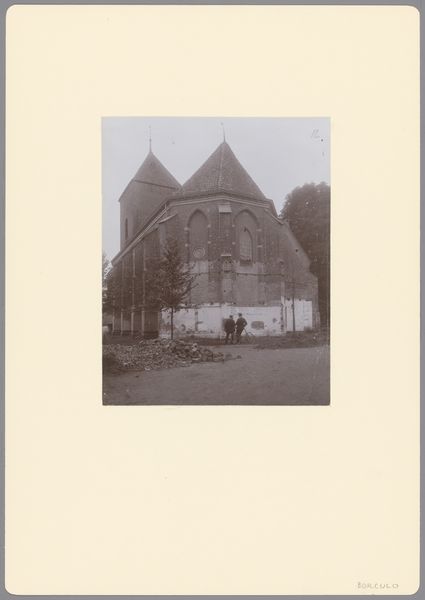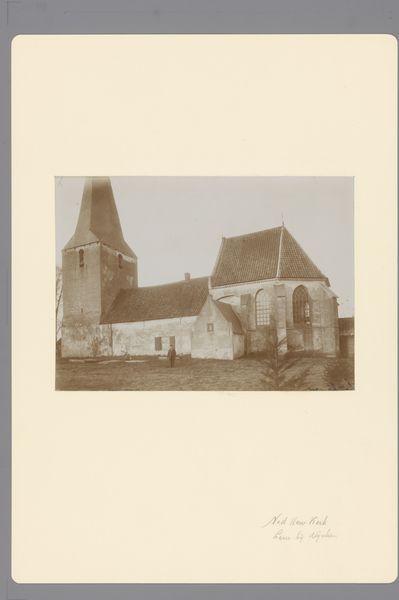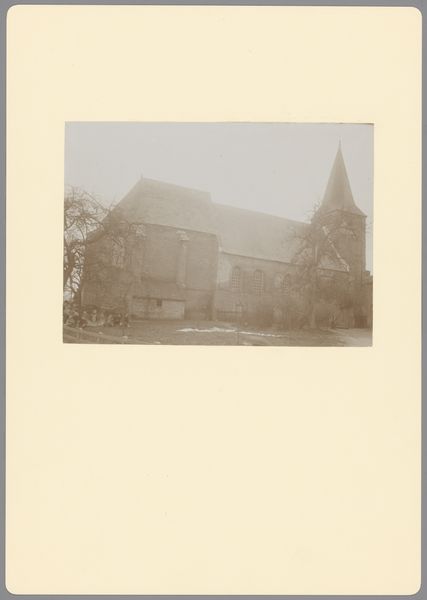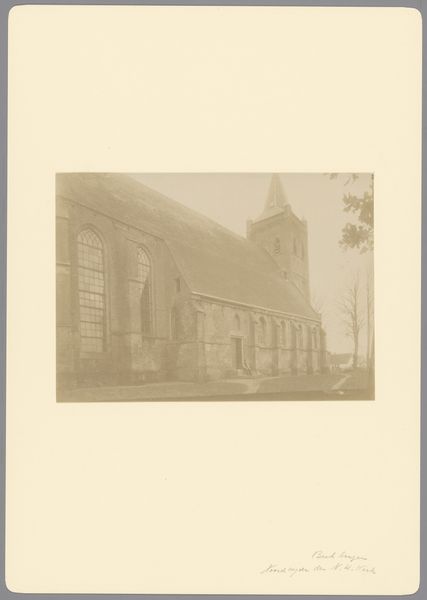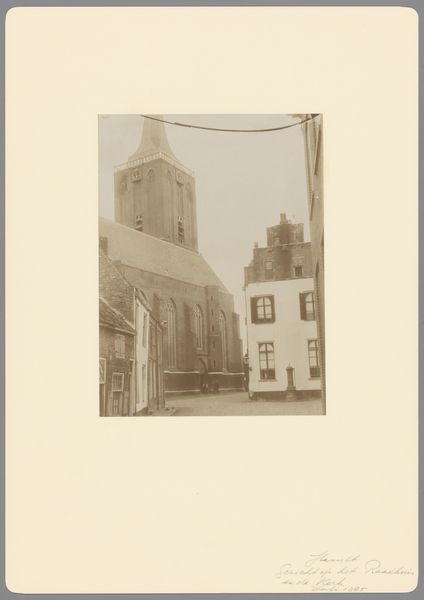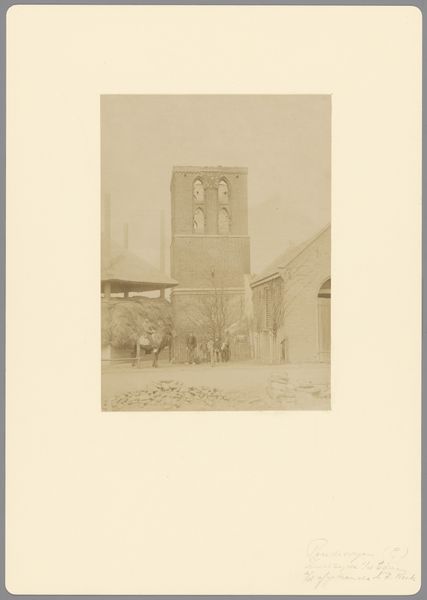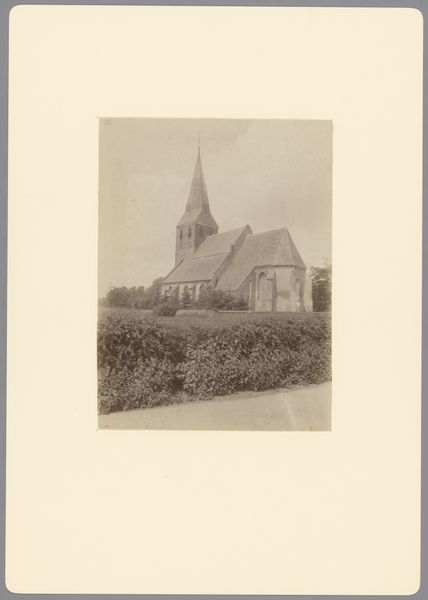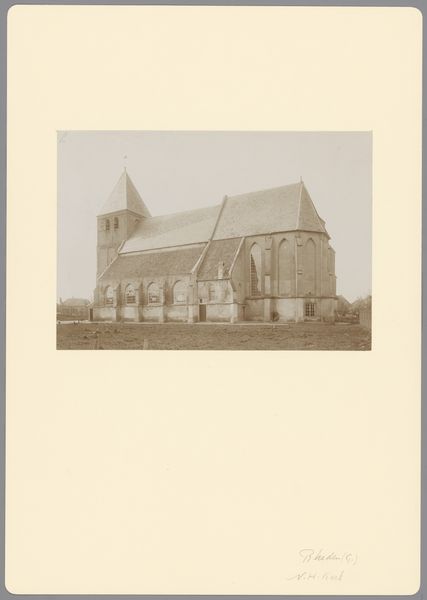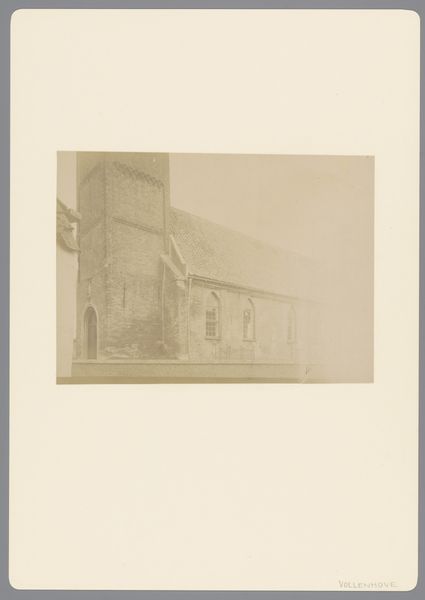
Dimensions: height 222 mm, width 165 mm
Copyright: Rijks Museum: Open Domain
Editor: This is "Gezicht op de Hervormde kerk te Leur", a photo, probably from between 1890 and 1920, by an anonymous photographer. It looks so…ordinary. Almost like it’s trying to disappear. What’s interesting to you about this particular church portrait? Curator: The photograph, although seemingly simple, highlights a pivotal shift in the public’s relationship with religious institutions during this period. The Reformed Church, once central to community life and visual culture, is now presented as almost recessive. This anonymity—both of the photographer and the subject itself—reflects a broader societal detachment. Editor: Detachment? How so? Curator: Well, consider the rise of secularism and alternative forms of social engagement at the time. The image, perhaps unintentionally, captures this transition. The church isn’t presented as a majestic beacon of faith but as a modest structure almost fading into the landscape. Was this a deliberate choice by the photographer, perhaps reflecting their own feelings, or a simple document of the changing times? What do you make of it? Editor: I hadn’t thought of it that way. The haziness makes the building seem humble and ordinary. Not an impressive, powerful place. More like a building like any other. Curator: Exactly! Its lack of grandeur makes it almost approachable, and it represents a normal everyday view, devoid of artistic ambition or grand statement. The architecture almost becomes a symbol, unintentionally speaking to the institution’s evolving role. Editor: That gives me a completely new understanding of this photo. Thanks! Curator: My pleasure! Looking closely at this photo reveals far more than meets the eye.
Comments
No comments
Be the first to comment and join the conversation on the ultimate creative platform.
